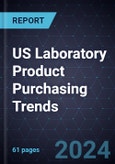An End-User Perspective on Spending and Growth Opportunities
Qualified respondents to the publisher's survey were invited to participate in a telephone interview examining their laboratory’s product purchasing process in 2023 and expectations for 2024. The publisher has conducted similar studies among the same targeted respondents since 2012. The survey provides companies with actionable and trending information from laboratory professionals to help drive business strategies and develop growth expectations.
The study presents year-over-year data to illustrate yearly laboratory budget trend developments where applicable. Note that the recruitment approach for 2023 shifted from inviting magazine readers to participate in an online survey to direct recruitment of professionals for telephone interviews. Survey participants play a role in their laboratory’s purchasing process, are familiar with the laboratory’s product budgets, and represent a laboratory that uses or plans to use products in one or more of the seven laboratory product categories: instruments, equipment, chemicals, reagents and kits, general lab supplies, plasticware, and glassware. A total of 120 decision-makers participated, answering questions on purchases, budgets, buying behaviors, and purchasing preferences.
Respondents were segmented by laboratory type: academic/government, biopharmaceutical, industrial, and hospital/clinical. Manufacturing, environmental testing, chemical or petrochemical, and food, beverage, or agricultural laboratories are classed as industrial laboratories for this analysis. Biotechnology, pharmaceutical, and contract research organizations are categorized as biopharmaceutical laboratories. State government and federal government laboratories are grouped as government laboratories. Hospital laboratories and clinical reference laboratories are included in the hospital/clinical group. Respondents encompassed various job titles: researcher, scientist, investigator, director, manager, and technician.
Data collected for budgets were quantitative and qualitative for end-user trends, such as budget expectations, brand selection preferences, purchasing process steps, evaluation and sourcing of lab products, recent and expected instrument and equipment purchases, frequency of price comparisons, funding trends, unmet needs, product purchasing preferences, the impact of inflation and supply chain issues on laboratories, the impact of inflation on budgets and spending, and conference attendance expectations.








